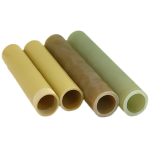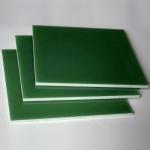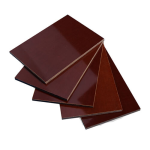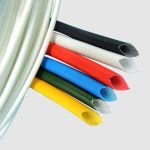A Beginner’s Guide
In today’s electrified world, we often hear about the importance of insulation – whether it’s in your home’s walls or inside complex machinery. But when it comes to electrical systems, insulation becomes more than just a comfort feature – it’s a safety essential.
So what exactly are electrical insulating materials? Let’s break it down in simple terms.
First Things First: What Is Electrical Insulation?
Electrical insulating materials are non-conductive substances that resist the flow of electric current. Their primary job? To protect, separate and support electrical conductors while preventing unwanted flow of electricity – which could otherwise result in short circuits, equipment damage or even fires.
Think of insulation as the silent guardian that keeps electricity flowing exactly where it should, and nowhere else.
Common Types of Electrical Insulating Materials
At Rama Krishna Exports Pvt. Ltd., we offer a variety of high-performance materials, each with its own unique properties and advantages. Here are some of our most popular electrical insulation products.
Fiberglass Epoxy Cloth Laminated Tube

A high-performance insulating tube made from epoxy-impregnated fiberglass cloth. Ideal for high-voltage and heavy-duty industrial use.
- Excellent dielectric strength
- Superior impact and compressive resistance
- Withstands high temperatures and humidity
- Easy to machine with precision
NEMA G10 / FR4 Glass Epoxy Sheet

Versatile epoxy laminates used widely in PCBs, industrial insulation and high-performance electronics. FR4 is flame-retardant; G10 is moisture resistant and mechanically strong.
- Superior electrical insulation
- Flame-retardant (FR4 meets UL94 V-0)
- Low water absorption and great dimensional stability
Phenolic Cotton Cloth Laminates

Durable and machinable laminates ideal for structural parts, bushings and low-voltage insulation.
- High mechanical strength
- Good low-voltage insulation
- Wear and friction resistant
- Easy to machine
Silicone Rubber Fiberglass Sleeving

Flexible, flame-retardant sleeving that protects wiring in extreme temperatures and compact assemblies.
- Dielectric strength up to 10kV
- Flame-retardant and self-extinguishing
- Flexible and strong in tight, high-heat spaces
Product Comparison Table
| Product | Dielectric Strength | Temperature Resistance | Key Applications | Flame Retardant |
| Fiberglass Epoxy Cloth Laminated Tube |  |  | High-voltage insulators, structural parts | No |
| NEMA G10 / FR4 Epoxy Sheet |  |  | PCBs, aerospace, industrial insulation | FR4: Yes, G10: No |
| Phenolic Cotton Cloth Laminates |  |  | Bearings, bushings, low-voltage parts | No |
| Silicone Rubber Fiberglass Sleeving |  |  | Motors, wiring harnesses, EVs | Yes |
Why Insulating Materials Matter
You may not always see them, but these materials are crucial to the safe and efficient functioning of countless devices and systems. Here’s why –
- Safety: Prevents electric shocks and fires
- Durability: Extends the life of equipment
- Efficiency: Maintains energy flow without interruptions
- Reliability: Reduces the chance of system failure
From small household gadgets to massive power plants, electrical insulation plays a role behind the scenes – keeping the lights on (literally and figuratively).
Where Are These Materials Used?
The applications are everywhere:
- Power transformers
- Electric motors and generators
- Printed circuit boards (PCBs)
- Electric vehicles (EVs)
- Renewable energy systems (like solar inverters)
Wherever electricity flows, insulation follows.
Final Thoughts
Whether you’re an engineer, an OEM, or simply someone curious about how things work, understanding insulating materials gives you a glimpse into one of the most fundamental pillars of modern electronics and electrical systems.
And if you’re looking for high-quality insulating materials, you’re in the right place.
